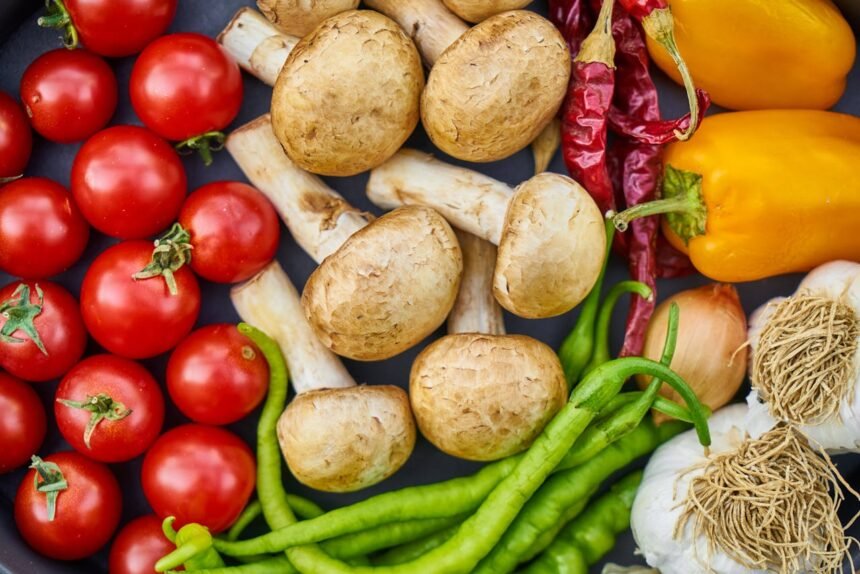Plant-based eating has surged in popularity across the United Kingdom, with increasing numbers of people adopting vegetarian, vegan, or flexible plant-focused diets. This comprehensive approach to nutrition offers numerous health benefits, including reduced risk of heart disease, certain cancers, and type 2 diabetes. However, successful plant-based eating requires understanding how to obtain all essential nutrients from plant sources.
Understanding Plant-Based Nutrition
Plant-based nutrition encompasses various dietary patterns, from strict veganism to flexitarian approaches that emphasise plants whilst including occasional animal products. Regardless of the specific approach, all plant-based diets share common principles: maximising intake of fruits, vegetables, whole grains, legumes, nuts, and seeds whilst minimising or eliminating animal products.
The nutritional adequacy of plant-based diets depends on variety, planning, and understanding nutrient density. Well-planned plant-based diets can meet all nutritional needs across all life stages, from infancy through older adulthood. The key lies in understanding which nutrients require special attention and how to optimise absorption.
Research consistently demonstrates that plant-based diets provide superior amounts of fibre, antioxidants, and phytonutrients compared to omnivorous diets. However, certain nutrients traditionally associated with animal products require careful consideration to prevent deficiencies.
Protein: Building Blocks from Plants
Contrary to common misconceptions, plant-based diets can easily meet protein requirements when properly planned. The average adult requires approximately 0.8 grams of protein per kilogram of body weight daily, though athletes and older adults may need slightly more.
Complete Protein Sources
Several plant foods provide complete proteins containing all essential amino acids. Quinoa stands out as a pseudo-grain offering complete protein with excellent amino acid profiles. Buckwheat, hemp seeds, and chia seeds also provide complete proteins in convenient, versatile forms.
Soya products represent the most protein-dense plant foods available. Tofu, tempeh, and edamame beans provide 10-20 grams of complete protein per serving, making them excellent centrepieces for plant-based meals. These foods also provide beneficial compounds like isoflavones, which support heart health and may reduce cancer risk.
Protein Combining Strategies
Traditional protein combining—eating specific food combinations at each meal—is unnecessary for most people. The human body maintains amino acid pools, allowing complementary proteins consumed throughout the day to combine effectively. However, understanding complementary protein relationships can help optimise protein quality.
Legumes paired with grains create complete proteins. Classic combinations include beans with rice, lentils with barley, or chickpeas with bulgur wheat. Nuts and seeds complement grains and legumes, providing additional amino acids and healthy fats.
Daily Protein Planning
Distribute protein intake throughout the day for optimal muscle protein synthesis. Include protein-rich foods at each meal: oats with nuts and seeds for breakfast, legume-based salads for lunch, and tofu or tempeh for dinner. Snacks can include hummus with vegetables or a handful of mixed nuts.
Athletes and active individuals should aim for slightly higher protein intakes, easily achievable through additional servings of legumes, nuts, seeds, and plant-based protein powders derived from peas, rice, or hemp.
Iron: Preventing Deficiency on Plant-Based Diets
Iron deficiency represents the most common nutritional deficiency worldwide, affecting plant-based eaters disproportionately. However, strategic food choices and preparation methods can ensure adequate iron intake from plant sources.
Haem vs Non-Haem Iron
Plant foods contain non-haem iron, which requires different absorption strategies than haem iron from animal products. Non-haem iron absorption varies significantly based on other foods consumed simultaneously and overall iron status.
The body regulates non-haem iron absorption more tightly than haem iron, absorbing more when stores are low and less when adequate. This regulatory mechanism provides protection against iron overload, a condition associated with increased disease risk.
Iron-Rich Plant Foods
Dark leafy greens lead the list of iron-rich plant foods. Spinach, Swiss chard, and kale provide substantial amounts of iron alongside folate, vitamin K, and antioxidants. Legumes, particularly lentils and chickpeas, offer iron plus protein and fibre in convenient, affordable packages.
Quinoa, amaranth, and other pseudo-grains provide more iron than traditional grains whilst offering complete proteins. Nuts and seeds, especially pumpkin seeds and cashews, contribute iron alongside healthy fats and minerals.
Dried fruits like apricots, figs, and raisins provide concentrated iron sources perfect for snacking or adding to breakfast cereals and salads.
Enhancing Iron Absorption
Vitamin C dramatically increases non-haem iron absorption when consumed with iron-rich foods. Citrus fruits, bell peppers, tomatoes, and strawberries provide excellent vitamin C sources. Simple strategies include adding lemon juice to spinach salads or serving iron-rich legumes with tomato-based sauces.
Cooking in cast iron cookware can increase the iron content of foods, particularly acidic dishes like tomato sauces. Soaking and sprouting legumes and grains reduces compounds that inhibit iron absorption whilst increasing overall nutrient availability.
Avoid consuming tea, coffee, and calcium-rich foods with iron-rich meals, as these can inhibit absorption. Space these items at least one hour before or two hours after iron-rich meals.

Vitamin B12: The Essential Supplement
Vitamin B12 represents the only nutrient unavailable from plant sources in reliable amounts, making supplementation essential for all plant-based eaters. This vitamin supports nerve function, DNA synthesis, and red blood cell formation.
Understanding B12 Requirements
Adults require 2.4 micrograms of vitamin B12 daily, though absorption decreases with age. Pregnancy and breastfeeding increase requirements to 2.6 and 2.8 micrograms respectively.
Vitamin B12 stores in the liver can last several years, meaning deficiency symptoms may not appear immediately after transitioning to plant-based eating. However, waiting for symptoms to appear risks irreversible nerve damage.
Supplementation Strategies
Several supplementation approaches ensure adequate B12 intake. Daily supplements containing 25-100 micrograms provide reliable absorption for most people. Alternatively, weekly supplements of 2,000-2,500 micrograms work equally well.
Sublingual (under-the-tongue) supplements may offer superior absorption, particularly for older adults who may have reduced stomach acid production. Cyanocobalamin represents the most stable and well-researched form of B12 supplementation.
Fortified Foods
Some plant-based eaters prefer obtaining B12 from fortified foods rather than supplements. Nutritional yeast, plant-based milks, and breakfast cereals often contain added B12. However, relying solely on fortified foods requires careful calculation to ensure adequate intake.
Calcium: Strong Bones Without Dairy
Plant-based diets can easily meet calcium requirements through diverse food sources. Many plant foods provide calcium with superior absorption rates compared to dairy products.
Top Plant-Based Calcium Sources
Dark leafy greens, particularly kale, collard greens, and bok choy, provide highly absorbable calcium. Calcium absorption from kale exceeds that from milk, making leafy greens excellent choices for bone health.
Tahini (sesame seed paste) provides exceptional calcium density, with two tablespoons supplying approximately 120 milligrams. Almonds, Brazil nuts, and figs also contribute significant calcium amounts.
Fortified plant-based milks often contain more calcium than dairy milk, with better absorption rates. Choose varieties fortified with calcium carbonate and shake well before use, as calcium tends to settle.
Factors Affecting Calcium Absorption
Vitamin D enhances calcium absorption, making adequate vitamin D status crucial for bone health. Sun exposure, fortified foods, or supplements can meet vitamin D requirements.
Oxalates in some foods can bind calcium, reducing absorption. However, this effect is minimal when consuming varied diets. Cooking can reduce oxalate content in foods like spinach and Swiss chard.
Excessive sodium and protein intake can increase calcium excretion, though this effect is less pronounced on plant-based diets due to their alkalising nature.
Omega-3 Fatty Acids: Plant-Based Sources
Omega-3 fatty acids support heart health, brain function, and inflammatory balance. Whilst fish provides preformed EPA and DHA, plant-based eaters can meet omega-3 needs through careful food choices and potential supplementation.
ALA-Rich Plant Foods
Alpha-linolenic acid (ALA) represents the primary omega-3 fatty acid in plant foods. Ground flaxseeds provide the highest ALA concentration, with one tablespoon supplying more than daily requirements. Chia seeds, hemp seeds, and walnuts also provide substantial ALA amounts.
EPA and DHA Considerations
The human body can convert ALA to EPA and DHA, though conversion rates vary significantly between individuals. Women typically convert ALA more efficiently than men, and conversion decreases with age.
Algae-based supplements provide direct sources of EPA and DHA for those concerned about conversion efficiency. These supplements offer the same omega-3 fatty acids found in fish, derived from the algae that fish consume.
Zinc: Supporting Immune Function
Zinc supports immune function, wound healing, and protein synthesis. Plant-based diets can meet zinc requirements through strategic food choices and preparation methods.
Zinc-Rich Plant Foods
Legumes, nuts, and seeds provide the highest zinc concentrations in plant foods. Chickpeas, lentils, and cashews offer excellent zinc sources alongside protein and other minerals.
Whole grains contain more zinc than refined grains, making brown rice, quinoa, and oats superior choices for zinc intake.
Improving Zinc Absorption
Soaking, sprouting, and fermenting grains and legumes reduces phytic acid content, improving zinc absorption. These traditional preparation methods also enhance overall nutrient availability.
Protein intake enhances zinc absorption, making legume-based meals particularly effective for meeting zinc needs.
Meal Planning for Nutritional Completeness
Successful plant-based nutrition requires strategic meal planning to ensure nutrient adequacy. Focus on variety, colour, and nutrient density when designing meals.
Daily Nutrition Framework
Each meal should include protein sources (legumes, nuts, seeds, or plant-based proteins), complex carbohydrates (whole grains or starchy vegetables), healthy fats (nuts, seeds, avocados), and colourful vegetables or fruits.
Breakfast might feature oatmeal with ground flaxseeds, berries, and almond butter. Lunch could include quinoa salad with chickpeas, vegetables, and tahini dressing. Dinner might centre around lentil curry with brown rice and leafy greens.
Supplementation Guidelines
While well-planned plant-based diets can meet most nutritional needs, certain supplements may be beneficial. Vitamin B12 supplementation is essential, whilst vitamin D, omega-3s, and zinc may be helpful depending on individual circumstances and food choices.
Consider working with registered dietitians familiar with plant-based nutrition to optimise meal planning and supplementation strategies.
Special Considerations for Life Stages
Plant-based nutrition requirements vary across life stages, with particular attention needed during periods of rapid growth and development.
Pregnancy and Breastfeeding
Pregnant and breastfeeding women following plant-based diets should focus on adequate protein, iron, calcium, vitamin B12, and omega-3 fatty acids. Folate, naturally abundant in plant foods, supports proper neural tube development.
Children and Adolescents
Growing children and teenagers have higher protein and calorie needs per kilogram of body weight than adults. Focus on calorie-dense foods like nuts, seeds, avocados, and healthy oils to meet energy requirements.
Older Adults
Ageing affects nutrient absorption and protein synthesis, making adequate protein intake particularly important for maintaining muscle mass. Vitamin B12 absorption also decreases with age, potentially requiring higher supplement doses.
Monitoring Nutritional Status
Regular monitoring helps ensure nutritional adequacy on plant-based diets. Key markers include complete blood counts (for iron status), vitamin B12 levels, and vitamin D status.
Annual blood tests can identify potential deficiencies before symptoms develop, allowing for dietary or supplementation adjustments. Work with healthcare providers familiar with plant-based nutrition to interpret results appropriately.
Conclusion
Plant-based nutrition offers a sustainable, healthful approach to eating that can meet all nutritional needs when properly planned. Success requires understanding key nutrients, strategic food choices, and appropriate supplementation where necessary.
The abundance of plant foods available provides endless opportunities for creative, nutritious meals that support optimal health throughout all life stages. By focusing on variety, nutrient density, and proper preparation methods, plant-based eaters can thrive whilst contributing to environmental sustainability and animal welfare.
Remember that transitioning to plant-based eating is a journey rather than a destination. Gradual changes, continuous learning, and patience with yourself create the foundation for long-term success with plant-based nutrition.






